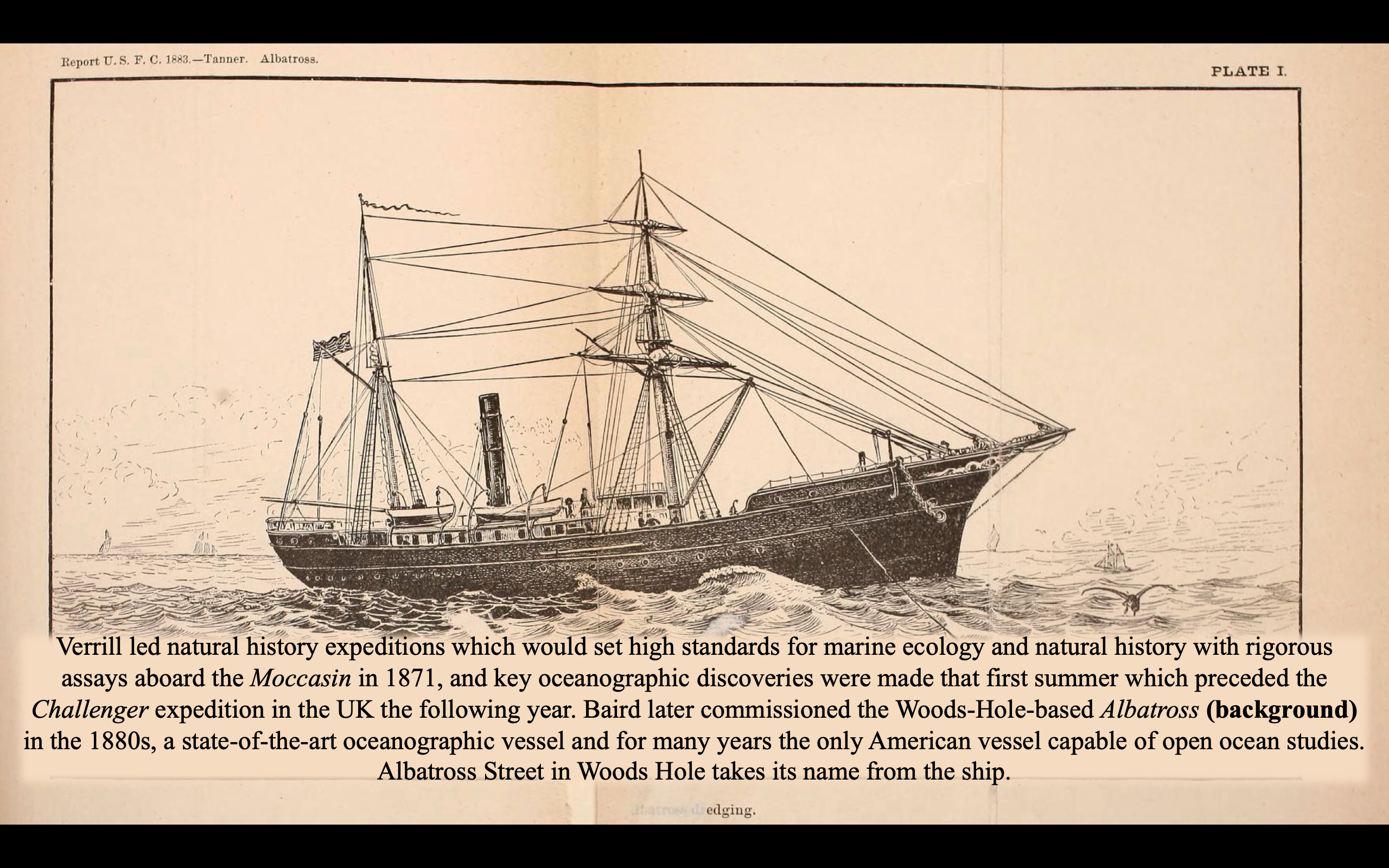150 Years of Woods Hole Science
8

Background image: From Report, 1885 p. 112, Pl. I.
References:
Allard Jr, D.C., 1967. SPENCER FULLERTON BAIRD AND THE UNITED STATES FISH COMMISSION: A STUDY IN THE HISTORY OF AMERICAN SCIENCE. The George Washington University.
p. 89-90:
“These efforts focused on the solution of the difficult problems growing out of the dispute over traps in southern New England. But a closely related activity was general biological research in the Woods Hole area…One of the great contributions of Spencer Baird was the broad approach that he took to these problems. From the first, he refused to restrict his research to the important commercial fishes, even though it was their fate in which he was especially interested. This approach obviously supported Bairds broader goal of making a basic study of marine biology off the coasts of the United States. It also had validity for the practical goals with which he was charged, since to understand commercial species it was essential to study their total environment…The breadth of Bairds program was also seen in the specific aspects of the environment he elected to study. Not only was the Commissioner concerned with a systematic description of the organisms of the sea. He also studied the food of these organisms, their migrations, the impact of parasites and diseases, the influence of weather conditions, water temperature, salinity, and currents, and the role played by man through pollution or fishing. In the words of a modern fishery scientist, Bairds "broad philosophical approach to the major problems” of the fisheries is entirely recognizable to current investigators. His work combined oceanographical and meteorological investigations with the studies of biology, ecology, parasitology, and population dynamics of various fish species Baird*s program of research is as comprehensive and valid today as it was 90 years ago.”
pp. 91-92:
“Through dredges towed by the Commission’s boats or by shore collecting expeditions, Verrill determined the location of the mollusk beds in the area and attempted to ascertain whether they had actually declined, as Nathaniel Atwood charged. More than that, this part of the investigation measured the abundance of the small floating animals and plants composing the plankton. A knowledge of both the plankton and the mollusks was crucial for the practical task of studying the fish decline since it was clear that these were the major sources of food for most coastal species.”
Report, 1885. U. S. Commission of Fish and Fish and Fisheries, Report of the Commissioner for 1883, 11, - Background image